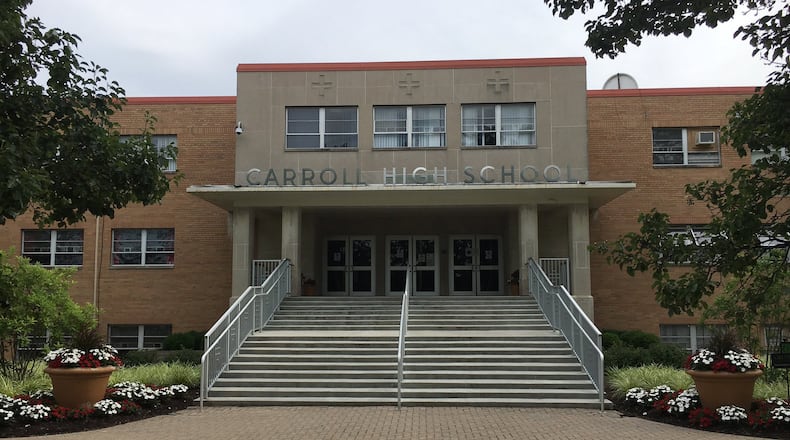RELATED: How the primary voucher program works
But the EdChoice “expansion” program is a separate budget allocation allowing students from any public school — good or bad — to get state money for private school, as long as the family is below 200 percent of the Federal Poverty Guidelines.
“One of the problems I have with this program is that it doesn’t look at the quality of either the sending school or the receiving school,” said State Sen. Peggy Lehner, R-Kettering. “It just basically says, if you’re low-income, we will pay to send you to a school of your choice.”
K-12 education funding in Ohio saw very small increases in the new state budget — a 1 percent bump overall, while programs like the $15 million Straight-A innovation fund were eliminated.
RELATED: Voucher students did worse on state tests
But the EdChoice expansion program will grow by more than 20 percent each of the next two years, from $31.5 million last year to $47.7 million in 2018-19. That’s because the program adds a new grade level every year, to let students stay in the pipeline. It began with only kindergarteners four years ago. This year, fourth-graders become eligible, followed by fifth-graders next year.
“It was originally touted as being, like $5 million, but I pointed out that it has to go up every single year,” said Lehner, chair of the Senate Education Committee. “It is going to end up being a very expensive program, without any real evidence that it has benefit, or certainly not more benefit than some other things we could be doing with those same dollars.”
In the Dayton area, only students slated to attend 22 schools in Dayton, one in Trotwood and one in Jefferson Twp. are eligible for the primary EdChoice program, because of students’ low scores on state tests in those schools.
RELATED: Dayton schools try to slow voucher exodus
But the expansion program opens doors for other students, according to Mary Ann Bernier, who oversees government programs for the Archdiocese of Cincinnati’s schools office. The Archdiocese represents schools throughout southwest Ohio, including in Butler, Montgomery and Clark counties.
“I think the legislators are supporting the parents’ cry for more choices,” Bernier said. “To be able to make the decision of faith-based education that otherwise wouldn’t have been possible for them.”
Rhonda Corr, superintendent of Dayton Public Schools, said the expansion voucher program is a drain on her district. DPS lost more than 2,500 students to private schools via the primary EdChoice program last year, because 22 of DPS’ 28 schools scored low enough for students to be eligible.
RELATED: Tuition fund bolsters Catholic schools
The expansion program means students at DPS’ higher-scoring schools, such as Horace Mann, Valerie and Stivers, can get state money to leave, too.
“I think competition can be good, but the state cannot continue to finance this,” Corr said. “Public education is under siege, and people need to step up and call their senators and legislators and let them know how they feel.”
The EdChoice scholarship amount is currently $4,650 per student per year for grades K-8, fully covering tuition at most private schools. The high school amount is $6,000, where Catholic high schools often cost $8,000 to $10,000 per year.
But EdChoice expansion students do not have to pay any tuition that is not covered by the scholarship, according to ODE.
RELATED: Parents try to navigate increasing school options
Final 2016-17 numbers are not yet available, but the Ohio Department of Education said participation in both the primary and expansion voucher programs has been growing. The regular EdChoice program grew from 17,867 students in 2013-14 to 21,250 in 2015-16. The expansion program grew from 1,064 to 5,746 in that span.
State data shows that most Dayton-area students using the primary voucher program attend Catholic schools. St. Helen, St. Anthony and Immaculate Conception were among the schools getting more than 200 voucher students last year. Bernier said EdChoice students make up a majority of the enrollment in some Dayton Catholic schools.
But ODE officials did not provide a breakdown of what schools the EdChoice expansion students attended, nor what home districts they came from.
Bernier said the legislature’s commitment to the annual growth of the expansion program gives the Archdiocese the ability to plan for the future.
RELATED: Dayton schools begin year with uneasy peace
“Every school markets differently, every school has different capacity,” Bernier said. “It’s helpful when we’re trying to help parents decide, we can say, we have this many spots. We all want to be able to do that.”
While private schools have the ability to accept or reject students’ applications based on their needs, Corr said districts like Dayton Public Schools must accept all students, and the churn of students leaving on vouchers makes it harder to plan.
Lehner said she’s not convinced the expansion program is a good idea.
“I have not been supportive of the EdChoice expansion program from the beginning,” she said. “While I’m not opposed to school choice, I think we have to be more thoughtful about what programs we include. This particular one doesn’t make an enormous amount of sense to me.”
About the Author

